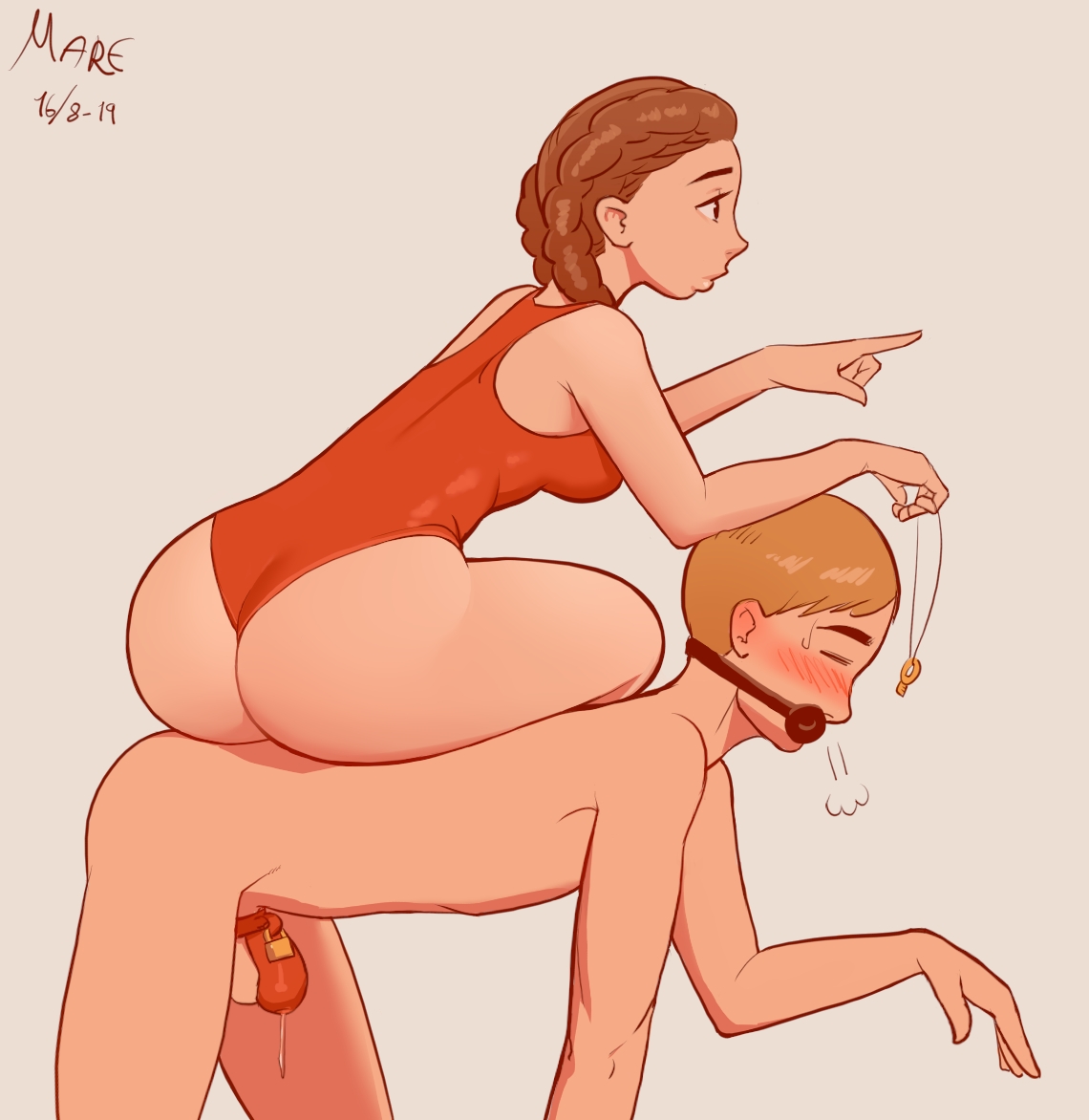
The Secret to a Happy Marriage 💕
This is a medium-length chapter.

The most common question women new to chastity ask is what type of device to put him in. It has to be comfortable if he is going to live with it on 24/7 and it has to be completely secure and effective if you are going to be happy with it. Unfortunately you will have to prepare yourself for some frustrating trial and error to find the right device and the right fit, because every man’s penis is different.
The chastity device might need to be custom fit. Generally, it is important to get him in the smallest cage his penis will fit in while soft so he cannot get an erection in the device. Sure, start with the one that is easy to put on. There’s a good chance it will come off eventually, even without trying. Go smaller, go much smaller, then go even smaller. The problem here will be erection and stimulation. Zero erection is the size you need – literally something as small as your husband’s smallest penis size ever. In no way do you need to worry about a device where the shaft is half an inch shorter than the length of his penis when completely flaccid. Often the original cage ordered turned out to be too wide or too long because of the man’s optimistic measurements or fear of being too confined. If you go with one that’s too big it will be unwieldy, add unnecessary weight and ultimately will be less suited to all-day every-day wear. A smaller device with be more discreet under clothes and will also be much more comfortable to wear. A well-fitting cage should have no space for any growth beyond his fully flaccid state. This is especially important for night-time comfort as nocturnal erections would pull on the scrotum. If he can still have an erection, it means the device is too big, and getting erect in it may be uncomfortable. If the device seems to hang down because he has low-hanging balls or if it gets “pushed away” during attempted erections, he may want to buy a “chastity strap”, which connects to the base ring and goes around his hips, to hold the device close to his body.
There are open “cage” designs and closed “tube” designs. The tube design has the advantage of restricting any access to the penis and not leaving any sensitive spots exposed. However, it will need to be unlocked occasionally for cleaning and skincare. An open cage design on the other hand enables the wearer to wash all bits of his penis in the shower and it allows the skin to breathe better. The downside of course is that if he is really desperate he might be able to make himself come in the cage by rubbing his glans through the bars. Nevertheless I would recommend an open design long-time chastity as it can be worn indefinitely without any need to be unlocked. Mixed designs that only cover the sensitive glans promise to be the best of both worlds, but they are rare.
Open “Cage” design: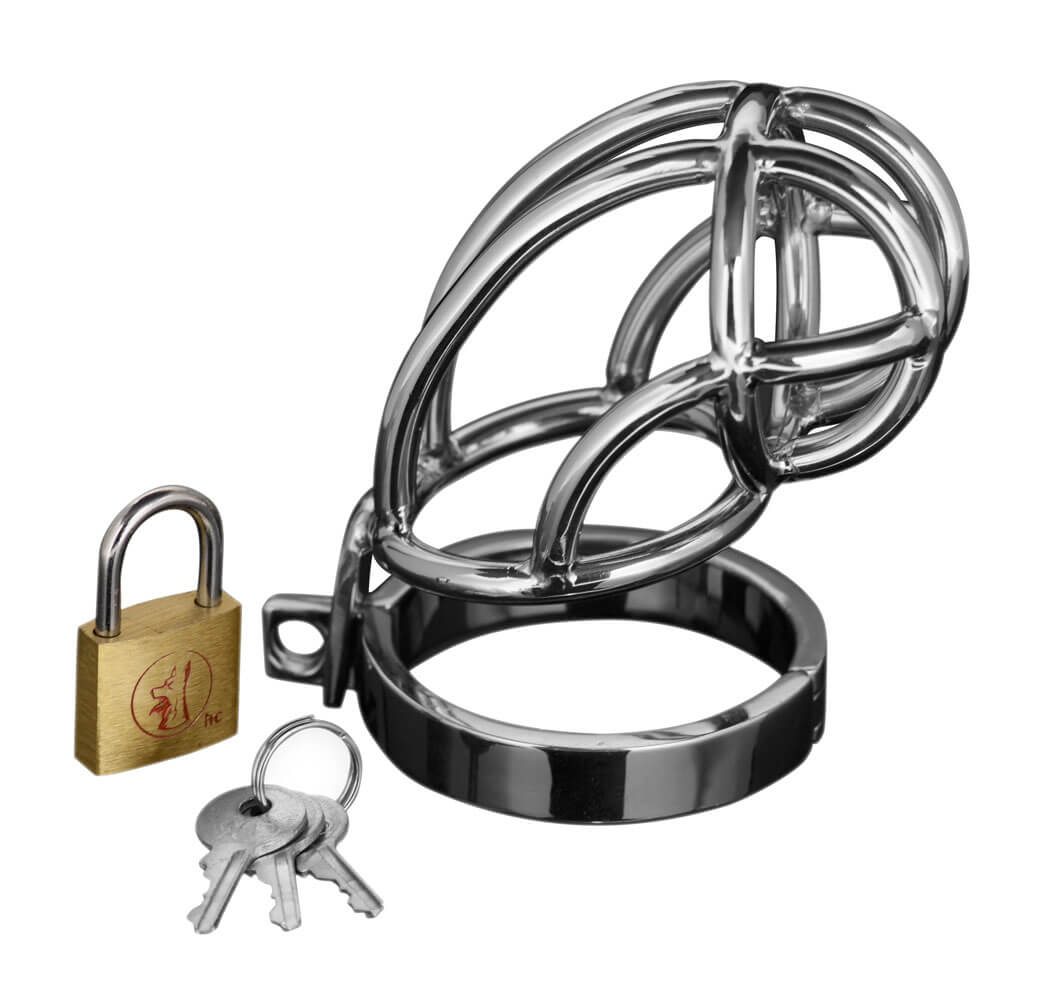 | Closed “Tube” design: | Mixed design: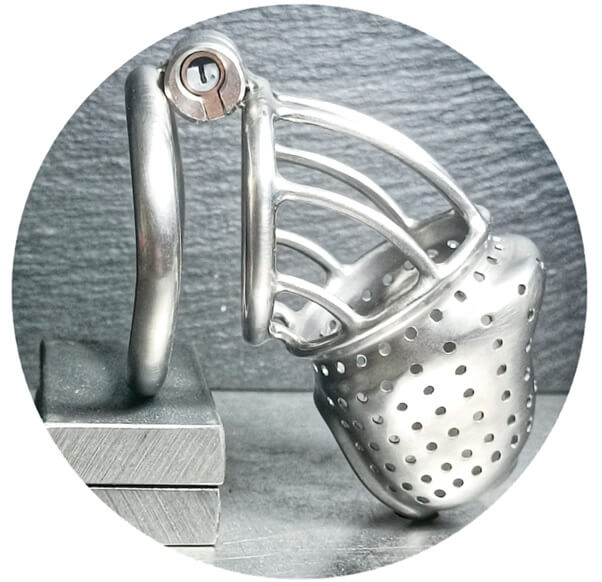 |
Uncircumcised men may still require occasional removal of the cage in order to clean underneath the foreskin. If you would like your husband to get circumcised this is a good opportunity to ask him. (It will be healed after around four weeks.) Nevertheless, there are millions of uncircumcised men in chastity who report no problems at all.
Chastity devices are available in multiple materials, including stainless steel, titanium, plastic (nylon, polycarbonate, or ABS), resin, and silicone rubber. Steel and titanium are the strongest and most hygienic materials as they don’t absorb any liquids or smells. However, their downside is weight: titanium weighs four times and steel eight times as much as the non-metallic materials.
Titanium: | Steel: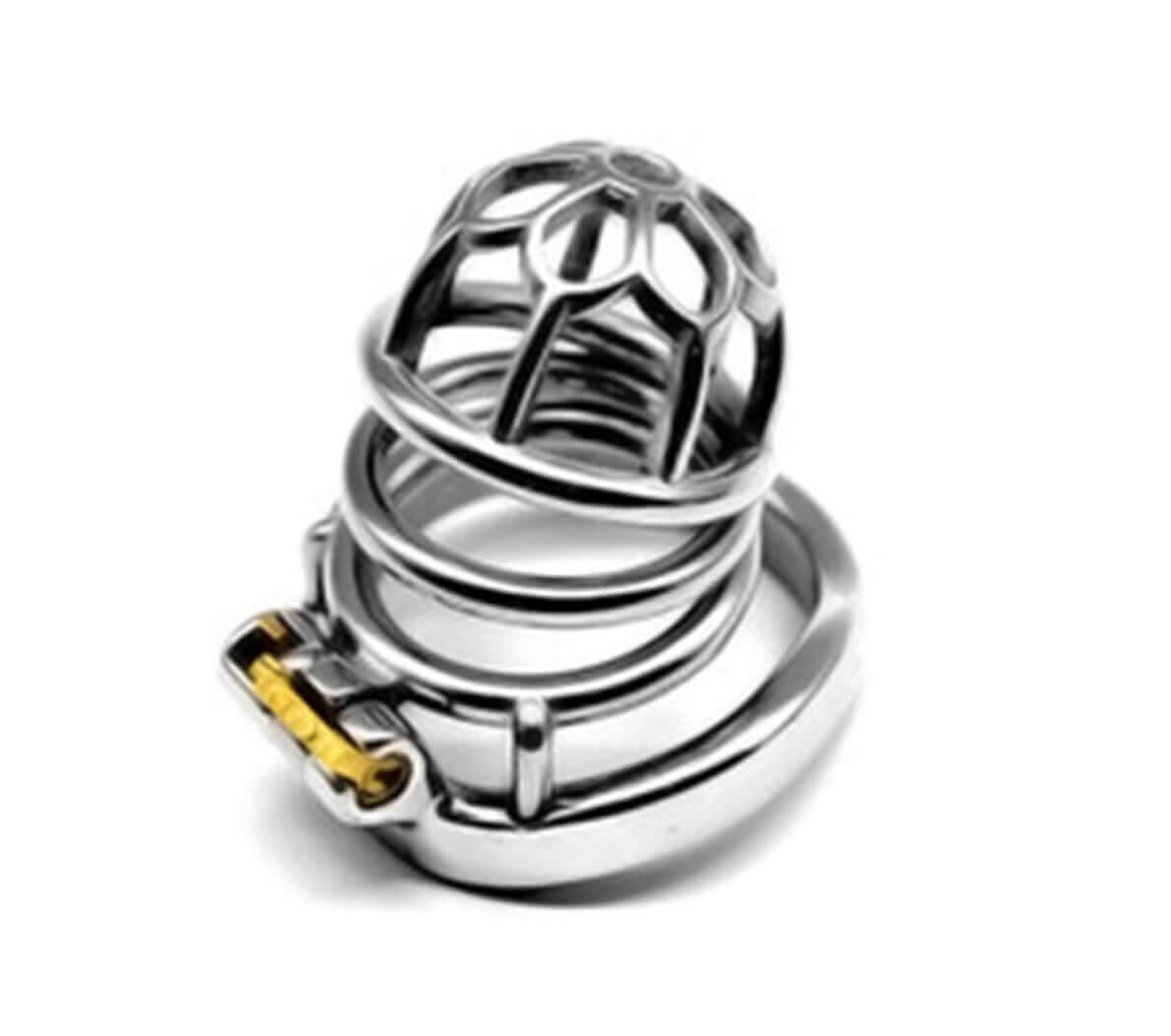 | Resin: |
Nylon: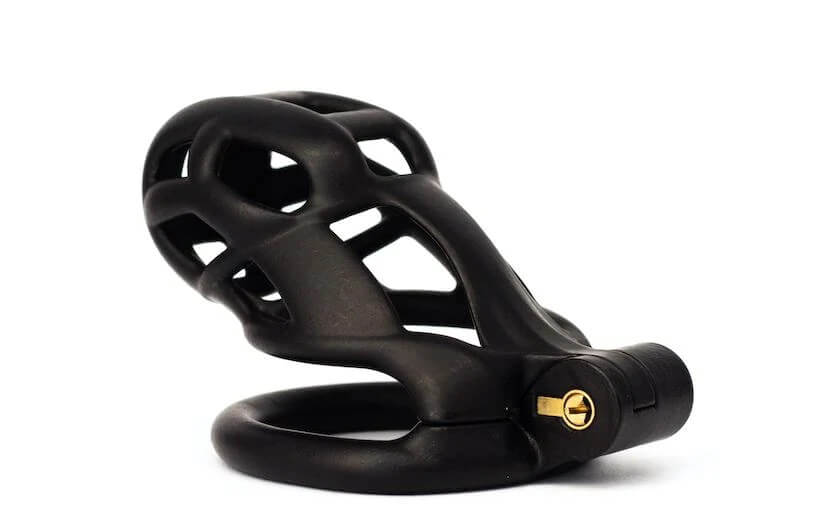 | Polycarbonate: | Silicone rubber: |
There are different types of locks that can be used in chastity devices.
The most common lock type is a small padlock, which makes a satisfying “click” sound when you lock him and has the additional advantage that your husband can lock himself without the key.
An integrated lock, also called magic locker or keyhole blocker is smaller and more discreet, but you will need the key to lock it (not just to unlock).
A new type of lock called “Click & Lock” combines the advantages of the two: it is an integrated lock that can be locked without the key.
Some chastity devices offer the option of a so-called security screw, which is a uniquely designed screw that locks the device and which only unlocks with a custom key you can’t buy anywhere else. This is the most discreet and lightweight option but can be a bit more fiddly.
Bluetooth locks are another option, although not yet available with most chastity devices. The advantage is that you don’t need to carry around a key because you can simply unlock the device with your phone, or even send a one-time code to your locked partner who can then use his phone to unlock the device. The downside is that you need to make sure the battery in the lock is not running empty.
Finally, there are numbered plastic seals. These can be used in lieu of a padlock, but they can only be used once and then need to be cut open with scissors. Each one has a unique printed number on it to prevent undetected tampering. Your husband can easily take the device off but he won’t be able to keep it secret from you. These locks are useful in some situations, for example for men who have to self-lock in long-distance relationships.
Padlock: | Integrated lock: | “Click & Lock”: |
Security screw: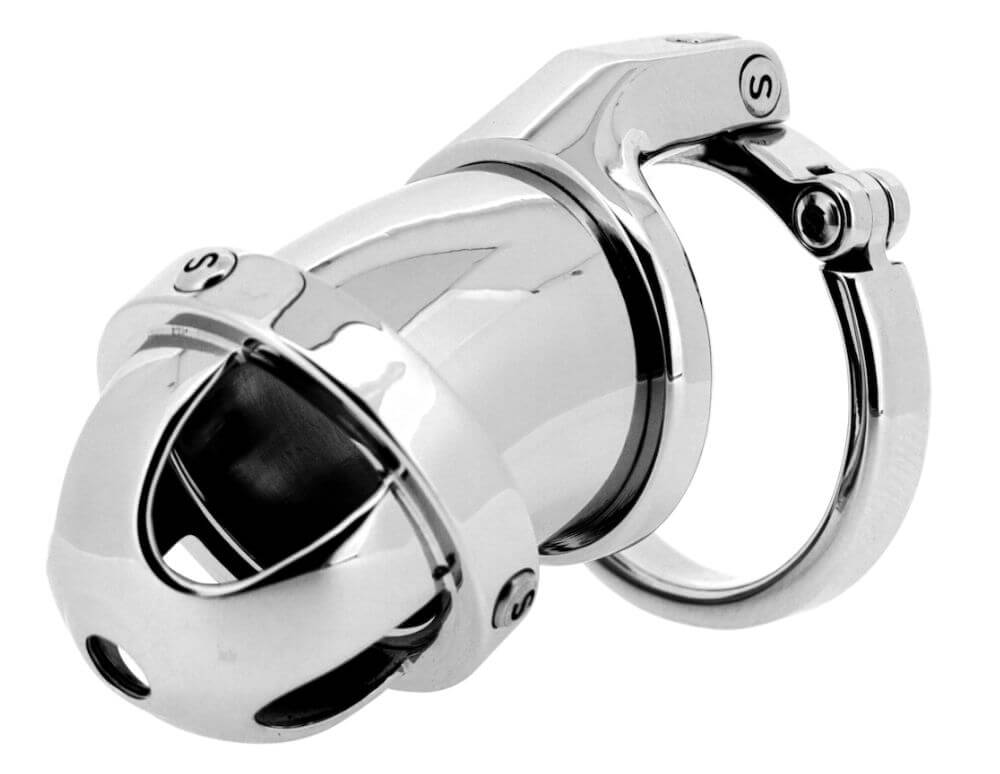 | Bluetooth lock: | Plastic seals: |
While a locked chastity device cannot be completely removed from his body, he will eventually figure out how to pull out his flaccid penis and masturbate behind your back, as many women found out the hard way. Once he has discovered this, chastity is just a game for him. It is not real and he not you is in control, something neither of you want. There are several approaches to increase security by preventing undetected pull-out of the penis.
Anti-pullout inserts: There are cage inserts that discourage pull-out of the penis by making it very painful, both available as optional extras to some devices or as an essential component of the chastity device. Basically, these inserts have rough surfaces or pricks that will be very painful when the glans has to go past them in a pull-out attempt. Unfortunately, these inserts can be uncomfortable at first. Furthermore, they are not very effective for uncircumcised men.
Glans rings: Some devices have a small ring that is placed behind the glans before locking the device. If the penis is pulled out, the glans ring will be left behind in the cage. Putting his penis back into the cage with the glans ring correctly in place is almost impossible without unlocking, as long as the bars of the chastity cage are so close together that he can’t get his fingers inside. Hence, while these devices don’t really prevent pull-out, no masturbation will remain undetected.
Urethra plugs: Another option is to get a device with a urethra plug (similar to a catheter but usually shorter). This makes it very hard to pull the penis out of the device. And even if he managed it would be virtually impossible to correctly re-insert the penis without unlocking, so you would know if he masturbated. The downside of this mechanism is that it’s not as quick and easy to put on because you would need to sterilize the plug and use lube to insert it. Furthermore, there is always a risk of urinary tract infections or urethral injuries.
Tetherspouts: The so-called tetherspout is a much shorter type of urethral insert that makes use a little-known anatomic feature of the male urethra to prevent pull-out of the penis. Insertion and removal of the tetherspout are somewhat complicated, but the big advantage is that it can remain inserted for a long time and doesn’t need to be removed when the device is unlocked (and apparently can even stay in place during sex). In a man’s urethra, just below the opening, lies an embedded ring of tough tissue that strongly resists stretching, and below this ring the urethra widens to form a tiny chamber, the fossa navicularis, that lies within the glans and can comfortably hold objects. Tetherspouts take advantage of these characteristics of the male urethra. They are two-part assemblies consisting of a spout and a retainer that together work exactly the same way as the button on a garment. When inserted and assembled, the tetherspout cannot be pulled out because the retainer in the fossa navicularis faces the urethra opening the same way a button faces a buttonhole. The spout will be slightly protruding from the urethra opening like a nozzle where it can be locked to the chastity device.
Piercings: The last (and without any doubt most secure) method is to pierce his penis so that a bar or loop can be put through it and locked to the device. He will not be able to pull his penis out unless he wants to rip out the piercing. The usual piercings used for chastity are the Prince Albert and the frenum piercing, both of which are simple and harmless. There are chastity devices with a built-in piercing rod, which means that when you take the device off for sex, the piercing is gone as well, and the tiny hole on the underside of his penis is barely noticeable when the piercing is out. A lot of the women I talked to were reluctant initially, but not a single one of them regretted having their husband’s penis pierced. An additional benefit of a piercing is increased comfort, as it makes the penis always stay in place. Normally, the penis tends to move a bit in the cage, for example after bending over, exercising, erections, or when his scrotum loosens and tightens. A piercing ensures that the tip of his penis is always pressed against the end of the cage as it should, thereby supporting an active, carefree lifestyle without any need to readjust the penis once in a while.
Piercing: | Urethra plug: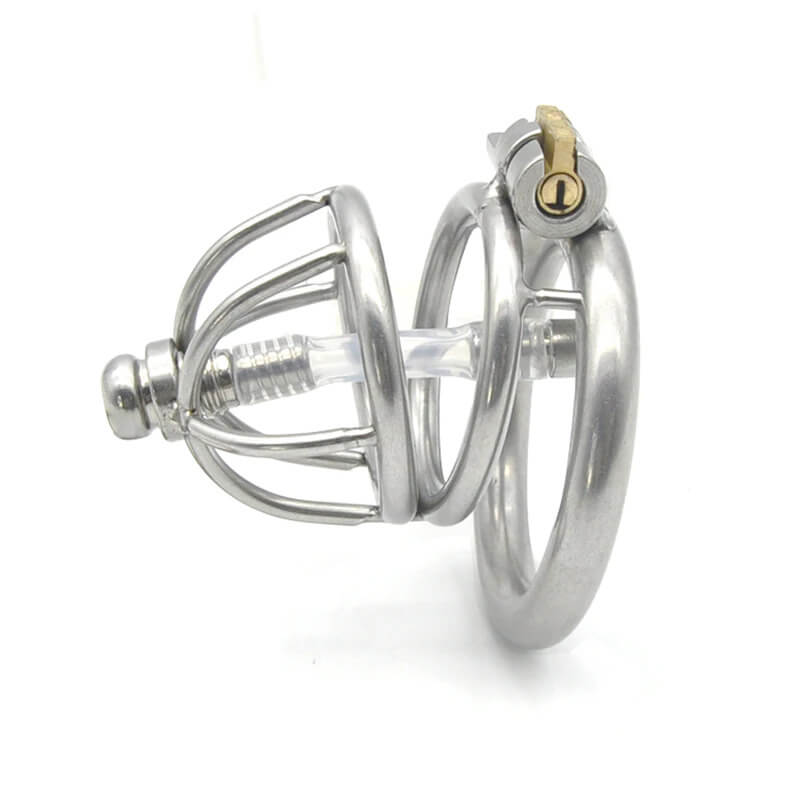 | Tetherspout: | Anti-pullout insert: | Glans ring: |
The most popular type of chastity device by far is the “ball-trap” design, like the ones shown above. While they are not able to prevent pull-out of the penis (unless he has a piercing, tetherspout or urethral insert), they can’t be removed from the “trapped” testicles without unlocking, hence the name.
There is a special type of chastity device available, which only consists of a small cage surrounding the glans, secured with a piercing or glans ring. These “glans cap” devices can be a more comfortable option, as they lack the base ring and usually allow erections (but do you even want that?). If secured with a piercing they offer great security as the device cannot be removed without key.
Finally, you could go for a full belt that goes around the hips and is almost completely masturbation-proof. However, I can’t imagine them to be fully suitable for 24/7 use: Can he do sports without the belt chafing? How can he wash his penis properly? What happens if he gains weight?
Ball-trap device: | Glans cap: | Full belt: |
